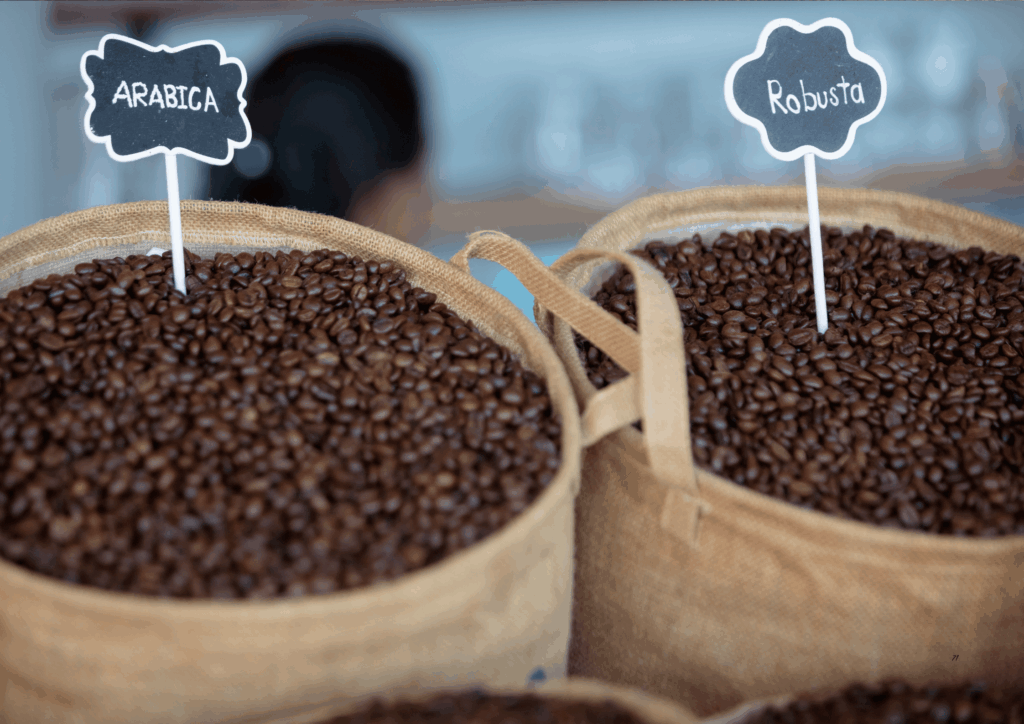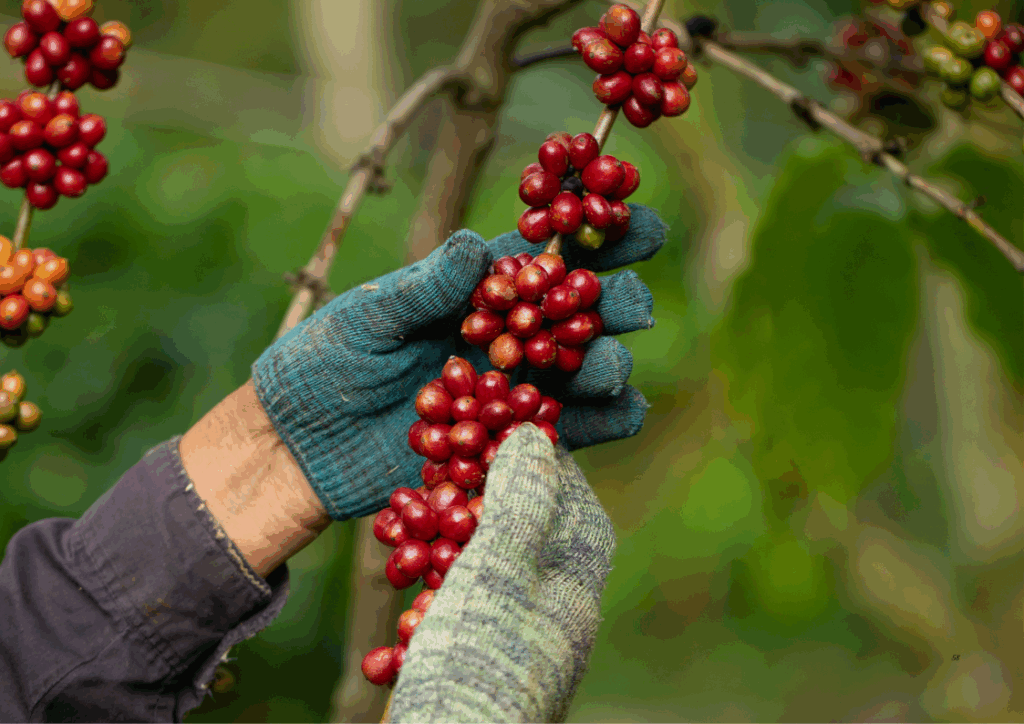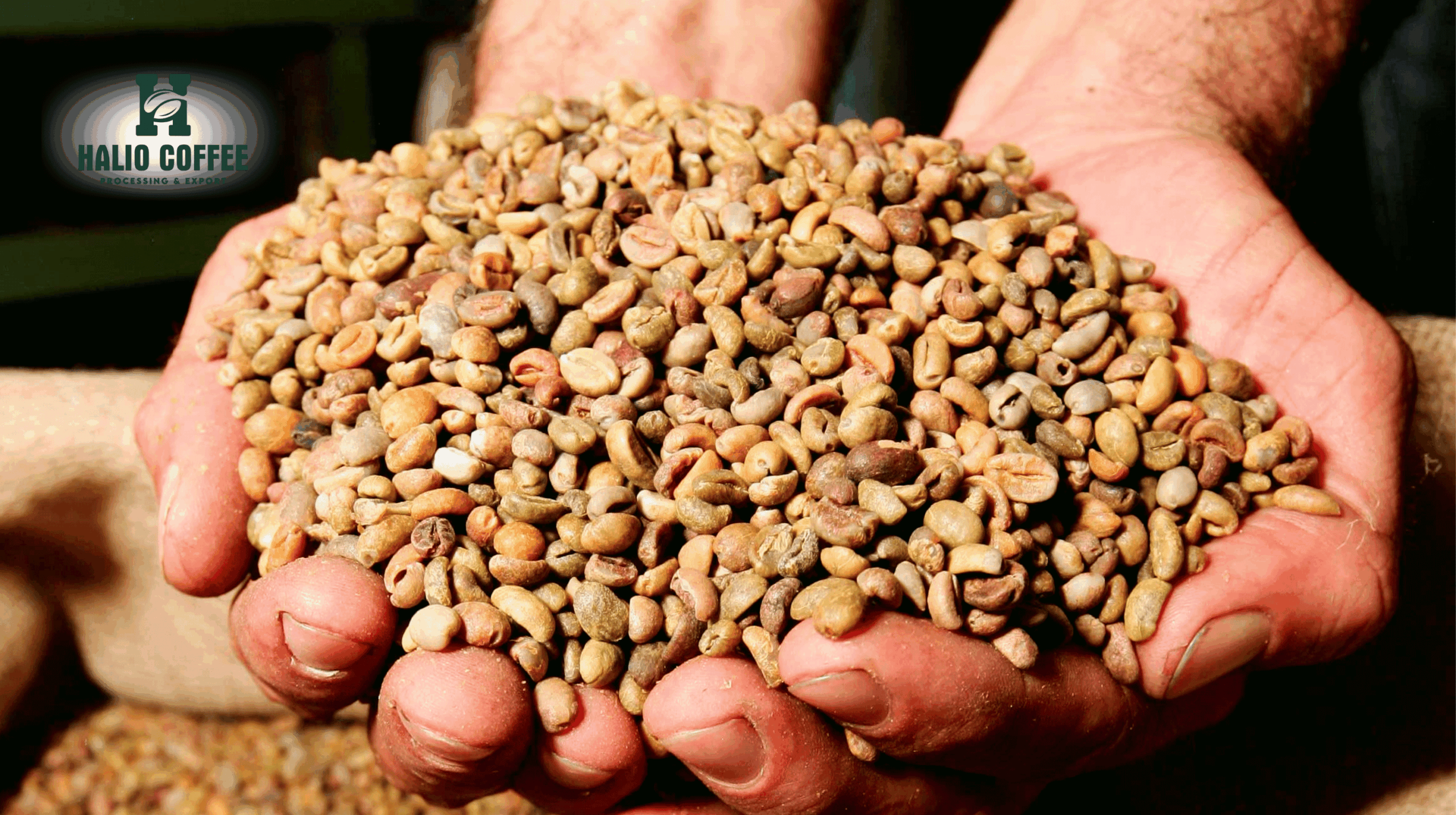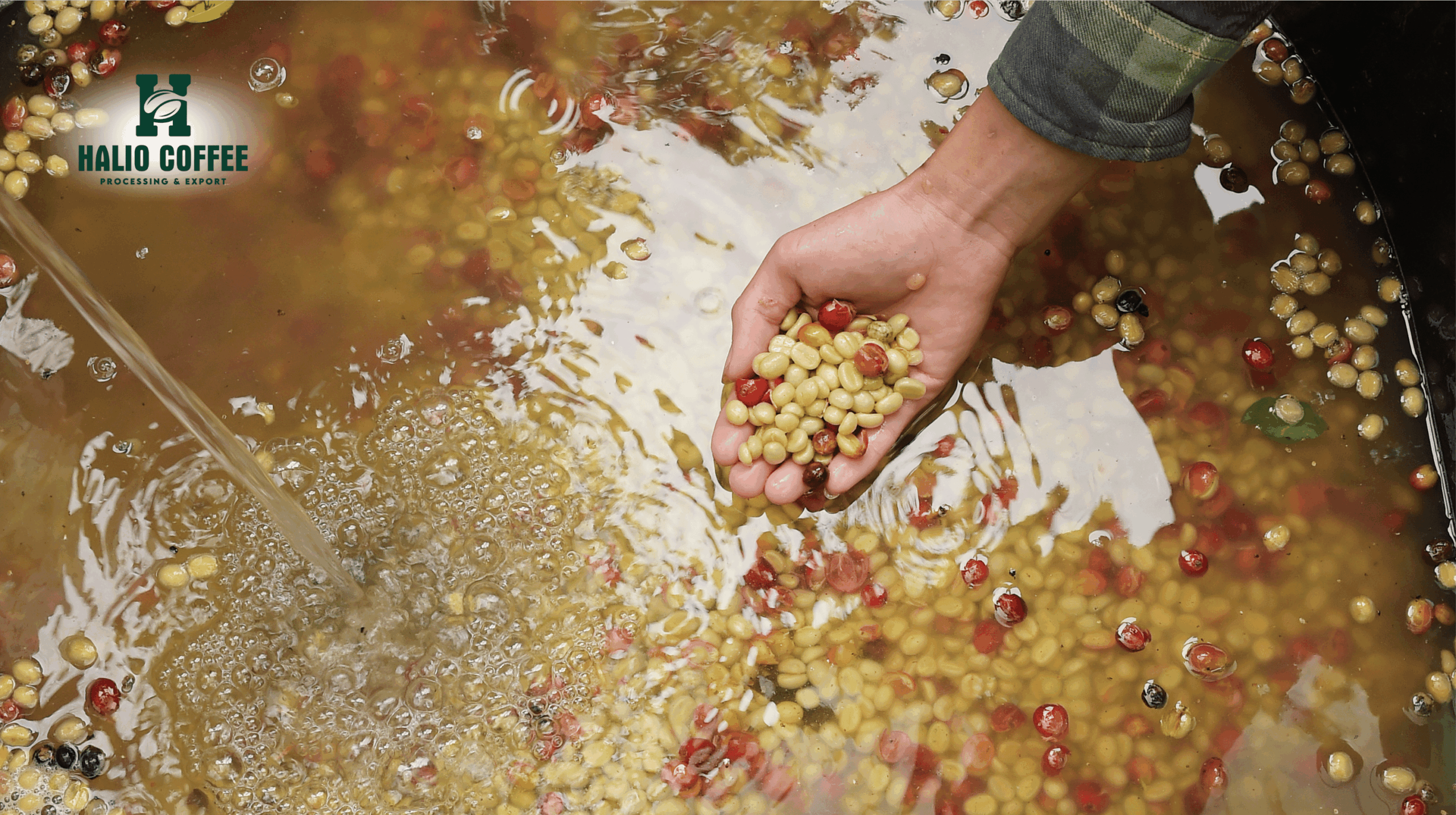Robusta Coffee Beans for Roasting: A Complete Guide for Producers, Distributors, and Roasters
In the global coffee supply chain, Robusta coffee beans for roasting have emerged as one of the most essential raw materials for roasters, distributors, and producers. Known for their bold flavor, high caffeine content, and excellent crema production, Robusta beans are indispensable in blends, instant coffee, and increasingly, specialty roasting.
For decades, buyers have primarily focused on Vietnam green coffee beans, given Vietnam’s position as the world’s largest Robusta producer. Yet the conversation has evolved. Instead of viewing Robusta solely as a filler or bulk product, today’s roasters and distributors are exploring Robusta’s full potential—seeking higher quality grades, experimenting with new processing methods, and even showcasing single-origin Robusta as a premium product.
This article provides in-depth knowledge for companies involved in production, distribution, and roasting. We will examine sourcing strategies, roasting techniques, quality grades, supply chain dynamics, and market opportunities for Robusta, while preparing readers for an important next step: the role of Vietnamese Robusta B grade coffee in global trade.
Understanding Robusta Coffee Beans

What Are Robusta Coffee Beans?
Robusta (Coffea canephora) is one of the two main commercial coffee species, alongside Arabica. While Arabica dominates global specialty markets, Robusta plays a crucial role in:
- Espresso blends, where it enhances body and crema.
- Instant coffee, thanks to its strong, consistent flavor.
- Functional beverages, due to its higher caffeine levels (2.2–2.7%).
When processed and roasted properly, Robusta coffee beans for roasting offer unique flavor potential, ranging from earthy and nutty notes to chocolate, spice, and even fruity complexity.
Robusta vs. Arabica: Key Differences
| Attribute | Robusta | Arabica |
|---|---|---|
| Caffeine content | 2.2–2.7% | 1.1–1.5% |
| Body | Heavy, bold | Smooth, light |
| Acidity | Low | High |
| Resistance | Stronger against pests/disease | More delicate |
| Price (average) | Lower | Higher |
For roasters, the contrast means Robusta is not a substitute for Arabica but a complementary component in blends and specific product lines.
The Role of Vietnam in Robusta Coffee Production
Scale and Supply
Vietnam is the world’s largest Robusta producer, supplying over 40% of global Robusta output. Annual production averages 25–30 million 60-kg bags, concentrated in the Central Highlands (Dak Lak, Gia Lai, Dak Nong, and Lam Dong).
This scale ensures that companies sourcing Robusta coffee beans for roasting can count on Vietnam for consistent supply, reliable logistics, and competitive pricing.
Vietnam Green Coffee Beans
For decades, the export backbone has been Vietnam green coffee beans, shipped in bulk for blending and instant coffee markets. However, the rise of direct trade, specialty demand, and differentiated processing has expanded the scope of Vietnam’s Robusta offering.
Today, Vietnamese exporters provide washed, honey, and natural Robusta alongside traditional dried cherries, enabling roasters to experiment with a wider flavor spectrum.
Processing Methods for Robusta Coffee
Natural (Dry) Processing
- Coffee cherries are sun-dried with the fruit intact.
- Produces strong, earthy flavors with a full body.
- Common in bulk shipments, including commodity-grade Robusta.
Washed (Wet) Processing
- Cherries are pulped and fermented before drying.
- Results in cleaner, brighter flavors with less harshness.
- Increasingly popular among specialty-focused exporters in Vietnam.
Honey and Experimental Fermentations
- Partial removal of mucilage during drying.
- Creates sweetness, fruity notes, and unique profiles.
- Often reserved for direct trade lots targeting specialty roasters.
For buyers of Robusta coffee beans for roasting, understanding these processes is crucial for selecting beans suited to specific blends or single-origin offerings.
Roasting Techniques for Robusta Coffee Beans
Key Challenges in Roasting Robusta
Roasters often face challenges such as bitterness, uneven flavor, or heavy smokiness when roasting Robusta. These challenges stem from its higher density, caffeine content, and chlorogenic acid levels.
Best Practices
- Lower Charge Temperature: Begin with slightly lower temperatures to prevent scorching.
- Extended Maillard Phase: Allow sugars and amino acids to caramelize, reducing harshness.
- Lighter Roasts for Specialty: To highlight fruitiness in washed Robusta.
- Medium-Dark Roasts for Blends: To balance bitterness with chocolatey depth.
Blending Strategies
- Espresso: A 20–30% Robusta component enhances crema and strength.
- Cold Brew: Robusta adds caffeine and body.
- Instant Coffee: Robusta remains the dominant choice for soluble production due to yield efficiency.
See more: Sustainable Vietnamese Robusta
Quality Grading of Robusta Coffee

Grading Parameters
Robusta beans are graded based on:
- Screen size (size of beans, typically screen 15–17 for higher grades).
- Defect count (broken beans, insect damage, etc.).
- Moisture content (optimal: 11–12%).
Specialty-Grade Robusta
Specialty Robusta is now recognized by the Coffee Quality Institute (CQI) and can score 80+ points on the cupping scale. This development has opened the door for roasters to explore Robusta beyond commodity uses.
Vietnamese Robusta B Grade Coffee
Within the grading spectrum, Vietnamese Robusta B grade coffee is widely used for blends where cost efficiency matters. While not premium specialty, it provides:
- Consistent quality for high-volume production.
- Reliable supply for distributors.
- Balance between price competitiveness and flavor depth.
This grade will be an increasingly important part of the discussion in the next stage of Vietnam’s coffee trade.
Direct Trade and Robusta Coffee Beans
Why Direct Trade Matters
For producers and distributors, direct trade in Robusta offers:
- Transparent pricing beyond commodity benchmarks.
- Farm-level traceability to meet consumer demands.
- Opportunities to access unique processing and micro-lots.
Case Example: Vietnamese Cooperatives
Cooperatives in Dak Lak and Gia Lai are developing washed and honey Robusta lots for direct buyers. These beans not only diversify sourcing but also create stronger farmer-buyer partnerships.
Market Opportunities for Robusta Coffee Beans for Roasting
Espresso and Blend Markets
In Europe, Robusta coffee beans for roasting form the backbone of espresso culture. Italy, Spain, and France rely on Robusta-heavy blends for crema and body.
Emerging Specialty Segment
Specialty roasters in the U.S. and Asia are increasingly experimenting with washed and honey Robusta as single-origin offerings. This trend challenges the stereotype of Robusta as a low-grade coffee.
Functional Beverages and RTD Coffee
The high caffeine content of Robusta makes it attractive for:
- Ready-to-drink (RTD) cold brews.
- Energy drinks infused with coffee.
- Nutraceutical products.
Supply Chain Dynamics
Logistics and Export Channels
Vietnam offers efficient logistics with major export ports in Ho Chi Minh City and Hai Phong, ensuring competitive FOB shipping terms for buyers worldwide.
Price Structures
- Commodity-grade Robusta: Tied to London ICE futures, with discounts/premiums based on quality.
- Direct trade and specialty Robusta: Premiums of $200–400/ton above market rates.
Risk Management
For roasters and distributors, strategies include:
- Forward contracts with exporters.
- Diversification across multiple Vietnamese provinces.
- Monitoring currency fluctuations (USD/VND).
Sustainability and the Future of Robusta
Climate change, soil degradation, and water scarcity are pressing issues in Vietnam’s Central Highlands. Exporters and cooperatives are responding with:
- Water-saving irrigation technologies.
- Organic fertilization and intercropping.
- Farmer training programs on climate resilience.
These initiatives are paving the way for the next focus in the industry: Vietnamese Robusta B grade coffee within the broader context of sustainability, where volume and resilience are just as important as quality.
- Robusta Natural Processed Coffee Beans: From Boldness to Nuance
- The B2B Sourcing Guide: How to Vet and Partner with a World-Class Green Bean Coffee Company
- Unroasted Robusta Coffee Beans
- Coffee Prices Today, Nov 18: Robusta Skyrockets $260/Ton in a Single Session
- Coffee Prices Today, September 26: Arabica Extends Gains, Robusta Turns Lower







